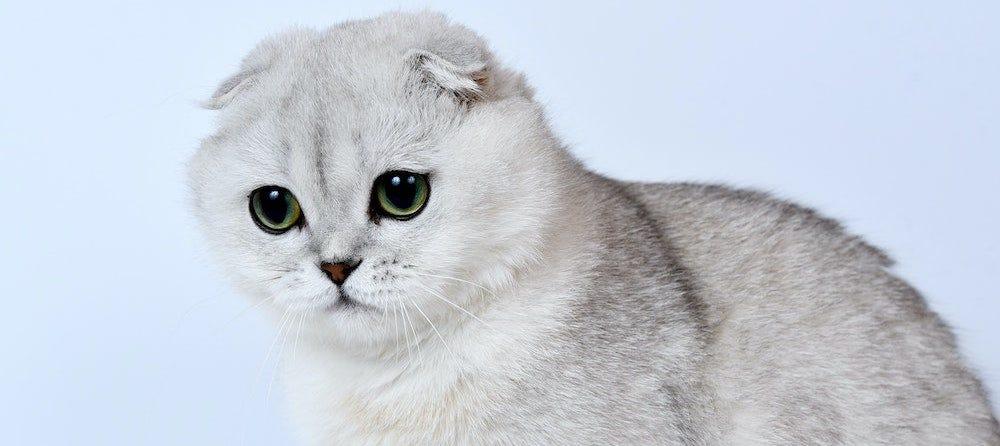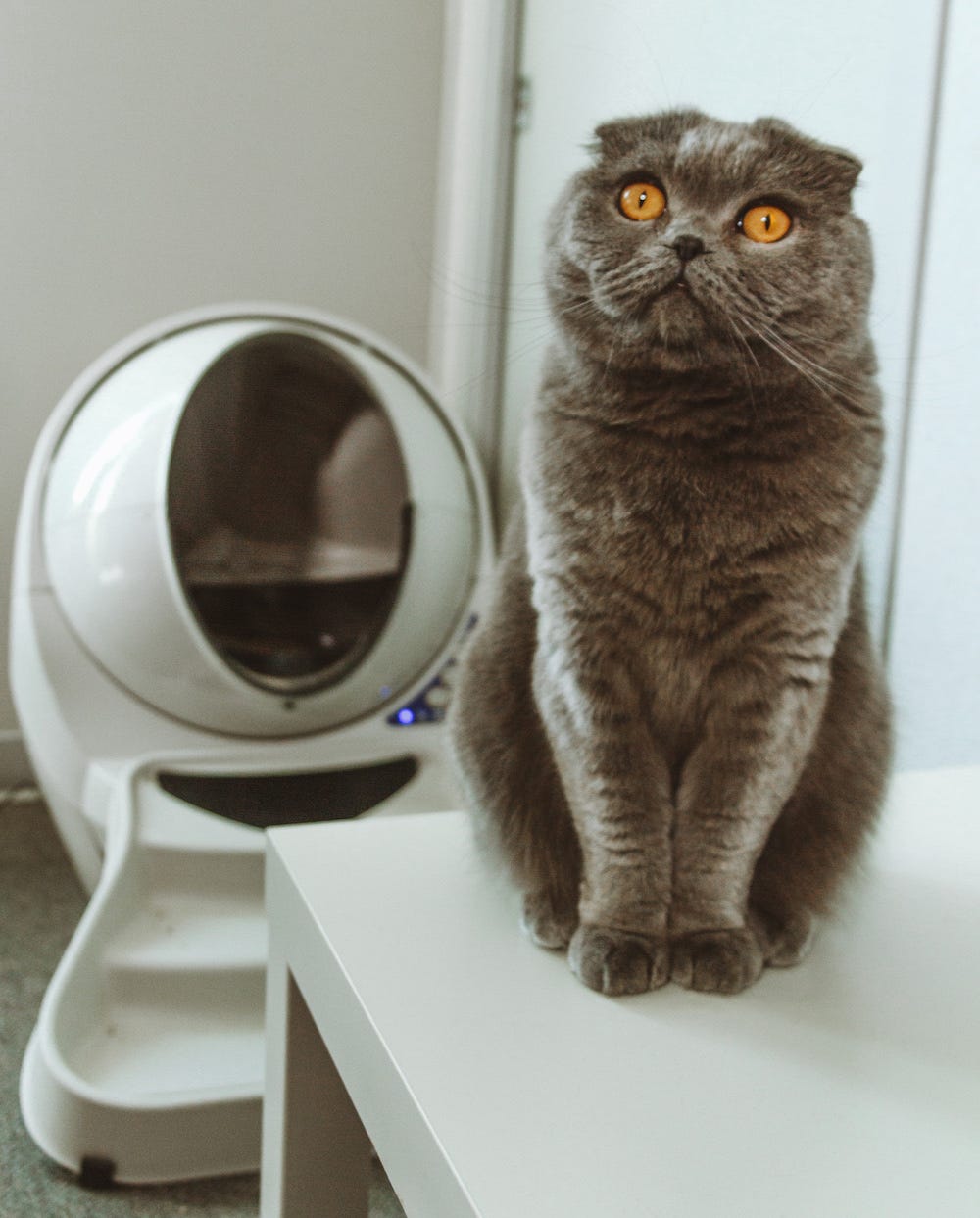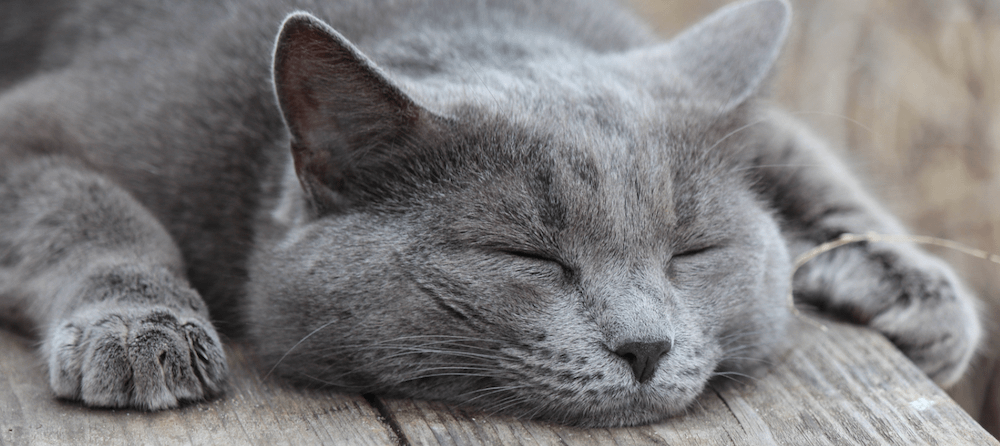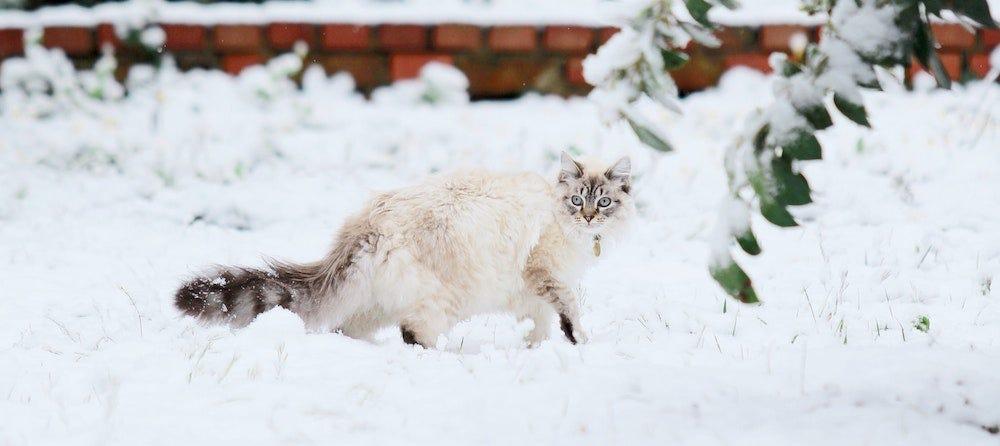If you are looking for a lovable, attentive, family-friendly cat, you’ve come to the right place. Let us introduce you to the Scottish Fold—a cat with small ears that adorably fold forward and down. This precious look is actually a genetic mutation and dominant gene that happens in males and females. Science is truly adorable!
This cat breed is named after their folded ears and where they first were discovered, in Scotland. The Scottish Fold cat is a famous breed that’s very popular on social media—including with celebrities such as Ed Sheeran and Taylor Swift, the latter of whom has two named Olivia Benson and Meredith Grey.
| Scottish Fold cat | ...at a glance |
|---|---|
| Personality | Sweet, loving, undemanding |
| Life expectancy | 11-15 years |
| Weight | 5-13 lbs |
| Coat & colors | Short or long; various colors & patterns |
| Energy level | Medium |
| Affection level | High |
| Friendliness | Medium |
| Shedding level | Medium |
| Required grooming | Medium |
Overview of the Scottish Fold Cat
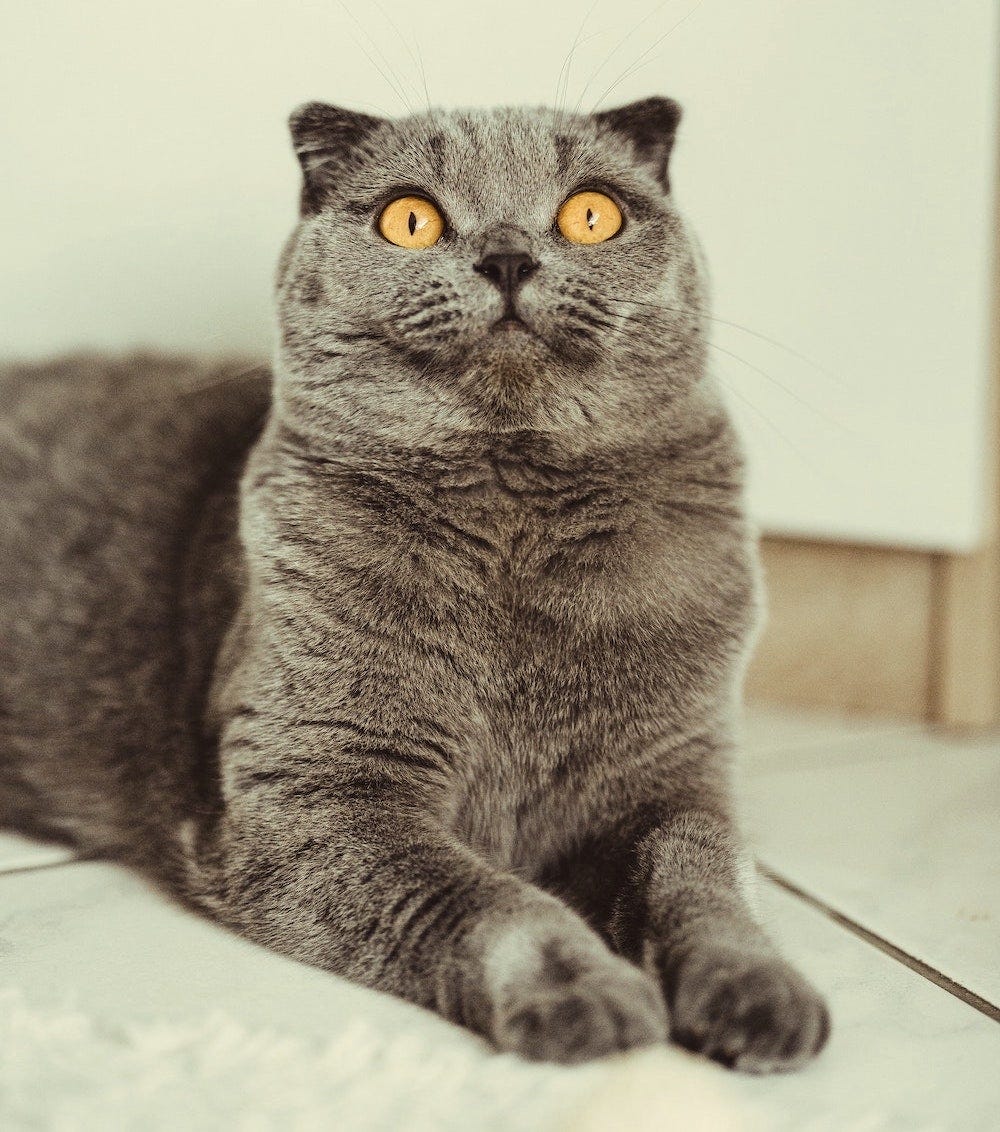
While the Scottish Fold cat was born from a spontaneous mutation, this breed was soon recognized as a very valuable breed with many great characteristics.
These cats with small ears each have their own personalities, but there are some general attributes of the Scottish Fold cat.
Weight
The weight of a Scottish Fold will generally fall between 5 and 13 pounds, making them a small- to medium-sized cat. They are well-rounded in their physical aspects, including their head and body. They're also well-padded, and you shouldn’t feel their bones too distinctly (which is ideal for hugging and snuggling).
Length
From head to tail, the Scottish Fold cat can vary from 10 to 30 inches long. Some Scottish Folds will have much shorter tails than others, and if they are on the lower end of the weight spectrum, they are likely to be on the shorter end as well.
Coat
The coat of the Scottish Fold varies just as much as their weight and length. There are longhair and shorthair Scottish Folds (both equally beautiful!).
Both long- and shorthair Scottish Folds have dense, plush fur, making them extremely soft to pet. You’ll truly love running your fingers through their coat, and they will love it too.
Scottish Fold cats may surprise you with the variety of colors and patterns they can display, including:
- white
- cream
- blue (grey)
- black
- silver
- red
- calico
- tortoiseshell
- tabby
Life expectancy
When you get a Scottish Fold cat, you can expect a friend for a while: Typically they live for 11-15 years.
Vet care is critical. Scottish Folds are prone to teeth issues (periodontal disease), deafness, polycystic kidney disease (PKD), hypertrophic cardiomyopathy, and more. Watch for symptoms, as these conditions can be serious and may require surgery.
History of the Scottish Fold
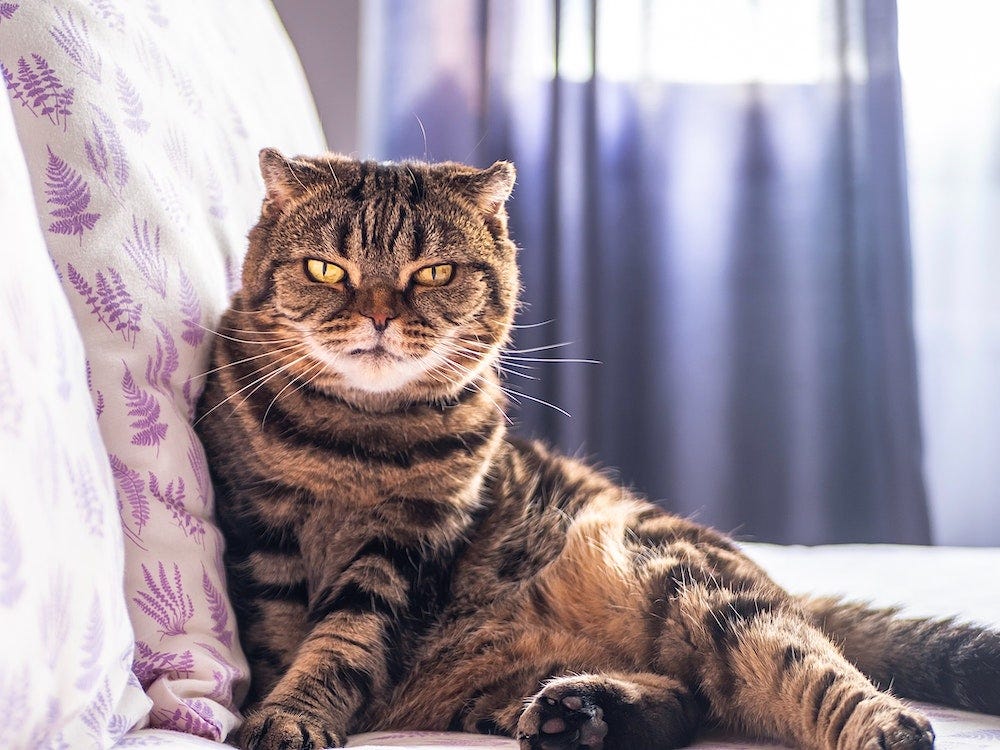
If you want to thank anyone for these cats with flat ears, thank Susie. Susie was found living on a farm in Perthshire, Scotland, in 1961, by British Shorthair breeders William and Mary Ross (who happened to live nearby). She was an adorable and friendly cat with unique folded ears, seemingly the first cat of her kind.
In order to get the breeding process started with Susie, William and Mary had promised her owners that if they could purchase her, they would give them one of her kittens. Susie had a natural mutation that caused her ears to fold over, and she passed this down to half of her kittens. Susie’s previous owners were given one of the kittens with folded ears that looked exactly like Susie, whom they named Snooks.
The dream gene
William and Mary realized that the folded ear gene was dominant, and only one parent needed the gene to pass it along to offspring. If a cat had one copy of the gene, they would pass it down to half of all kittens in any future litter. All Scottish Fold kittens are born with straight ears, and 18-24 days later their ears fold if they carry the gene.
The couple first named the breed “Lops,” after a type of rabbit. Later, they changed the name to Scottish Fold to honor where the first of their kind came from.
Concerns from other breeders and veterinarians arose about whether their folded ears would increase in ear infections or hearing issues. Luckily, these concerns did not play out—but worry about genetic problems continued to rise, especially with the GCCF.
The Governing Council of the Cat Fancy (GCCF) determines which cat breeds can be registered as a legitimate breed in the UK. This council declared the Scottish Fold barred from being registered on their list.
This prompted William and Mary to move to North America, where they were welcomed and accepted by all North American cat associations. The breed gained popularity and began to win competitions. Scottish Folds were properly recognized by the end of the 1970s.
At first, most Scottish Fold kittens had short coats. The longhair gene was recessive, but occasionally a kitten would come out with longer fur. To establish a more prominent long-haired gene mutation, Scottish Folds were bred with Persians.
No matter what your Scottish Fold looks like, they likely have won your heart with their incredibly friendly personalities and small flat ears.
Characteristics

These adorable cats can be described as one thing: round. From their round heads and bodies to their round tails, their folded ears aren’t the only things that help them stand out. They are medium-sized cats with wide eyes that stay alert and focused.
Their legs are on the shorter side, but they are still powerful and quick. Their tail is usually a size that’s proportionate to their bodies and won’t typically be longer than their torso. The Scottish Fold is an expressive and inquisitive cat that is extremely fun to be around.
Scottish Fold Personality
In terms of personality, Scottish Fold cats are very friendly and well-tempered. As a result, these older ear cats do well in family environments.
Does the Scottish Fold like to play? Of course they do! But they want to shower their human with affection just as much as they want to chase around a mouse on a string. They don’t always need to be active, and will want to curl up next to you and cuddle.
Scottish Folds will want to be around you at times and also feel comfortable and confident doing their own thing. These cats with flat ears are intelligent as a breed and can find ways to entertain themselves, but don’t be surprised when they come to check in on you and see if you are ready to pay them attention.
Of course, your Scottish Fold will have a personality that is unique to them. If you do spend time with a Scottish Fold, you’ll find out just how sweet and loving these cats can be.
Caring for a Scottish Fold cat
This folded ear cat will most likely have thick, dense fur that needs to be groomed as often as once a week (for short-haired Scottish Folds) or twice a week (for long-haired Scottish Folds). These cats will groom themselves daily, but to limit the number of hairballs your cat experiences, expect to groom them frequently.
To keep your cat's nails trimmed, order them a scratching post. (Extra points if the scratching post is as stylish as your cat is.)
You’ll also want to trim their nails every few weeks and pay attention to your Scottish Fold’s ears to ensure they are free of infection or ear mites.
Cats love to survey their spaces, and climbing can be an active and enriching activity for your kitty. A cat tree will allow for your Scottish Fold to take charge of their environment and feel independent. You should also find a comforting spot to put a litter box.
Your cat must learn early on where they are expected to use the bathroom, in a space that they can easily access. A self-cleaning litter box like Litter-Robot can help encourage your cat to use the litter box properly.
Potential health-related issues
The main health-related issue that stands out for Scottish Folds is the increased risk of developing osteochondrodysplasia. Osteochondrodysplasia is a degenerative joint disease that affects cartilage and bone development as a result of the folded ears gene. This can lead to severe arthritis.
A cat affected by osteochondrodysplasia might have joints in the tail, ankles, and knees that fuse together, becoming extremely stiff with the inability to move properly. You might notice that a kitten is suffering from this disease if they look abnormal compared to the rest of the litter. Even if they can walk around, the cat might look uncomfortable and slightly misshapen.
Adopting a Scottish Fold cat
These cats with small ears are lovable and intelligent, which makes for the foundation of a wonderful pet. Their unique look sets them apart from other breeds, and their personalities are well-received. Any cat will show you their unique personality once they accept you as their human. Take the time to get to know your Scottish Fold and appreciate them for all that they are!
Sources:
- Scottish Fold | Veterinary Genetics Laboratory
- About Us | The Governing Council of the Cat Fancy
- Osteochondrodysplasia in three Scottish Fold cats | NCBI
Photo credits:
- Sergey Semin via Unsplash
- Omar Ram via Unsplash
- Juan Gomez via Unsplash
- Kim Simon via Unsplash
